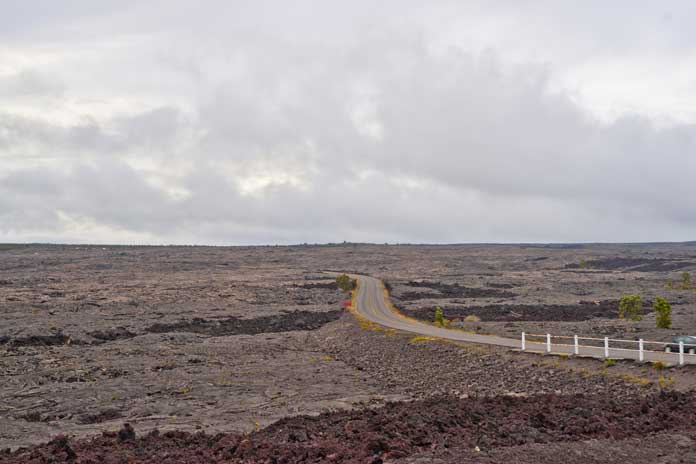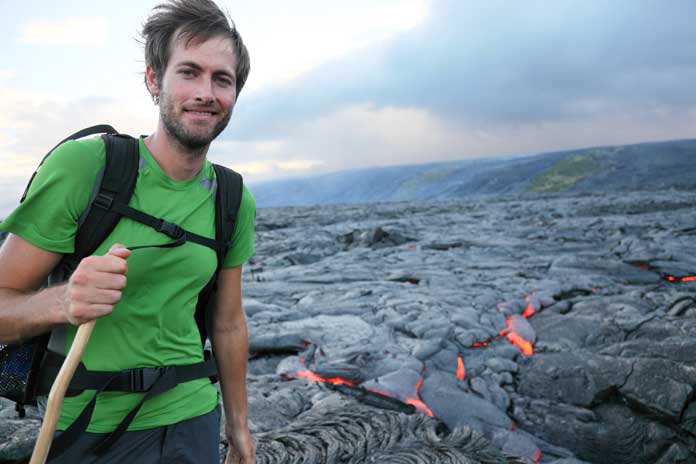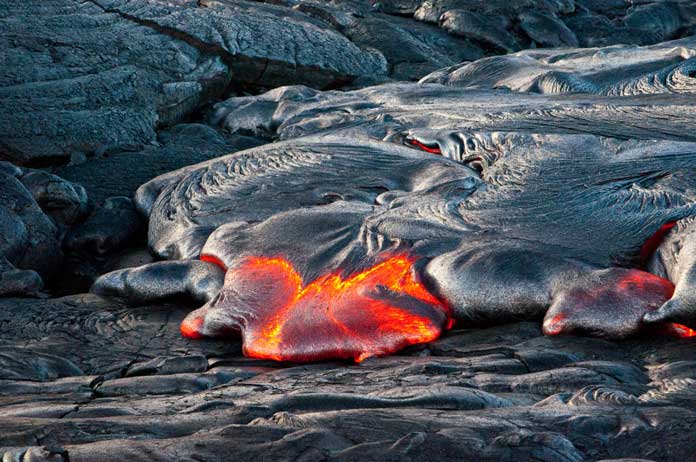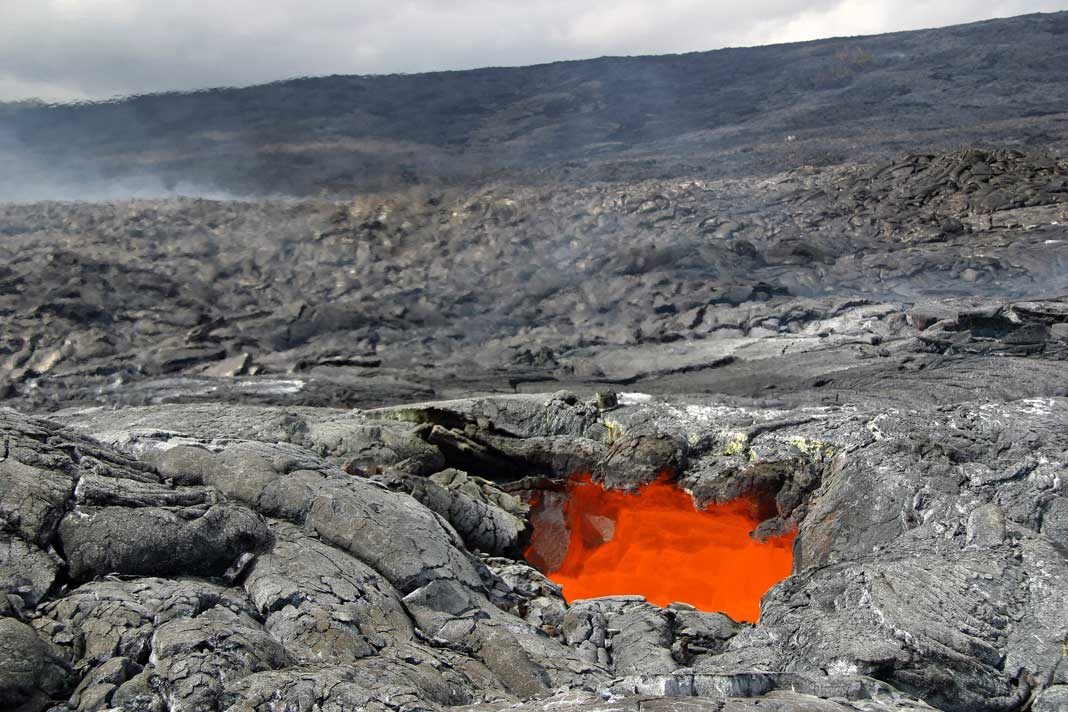The Hawaii Volcanoes National Park was established in 1916 and is found on the island of Hawaii in the state of Hawaii. Two active volcanoes call this park home, and the park was created to preserve and protect these powerful forces. The volcanoes are called Kilauea, which is known as one of the world’s most active volcanoes and Mauna Loa. Kilauea was traditionally considered the home of the volcano goddess Pele and many people from the islands visited to give her gifts. In 1790, a party of men, women, and children were caught in an eruption, leaving footprints behind in the lava, which can still be seen today. One of the original park entrances was also covered by lava, and other entries to the park have been created. The park constantly has areas that are closed off due to weather and the unpredictability of the active volcanoes and craters. The active areas are off limits to keep visitors and staff safe and to prevent harm to the volcano, crater, and individuals. Keep this in mind during your visit to one of the most fascinating places in the U.S.
Table of Contents
Chain of Craters Road in Hawaii Volcanoes National Park
The Chain of Craters Road is by far one of the most popular things to do in the Hawaii Volcanoes National Park. For years, the road has gone through adjustments and construction due to the volcanic eruptions and lava flows. There are ten stops along the drive where visitors can get out of their vehicle to learn about the point of interest at each stop. The road is currently a little over 18 miles long, and there is no food, water, or fuel available on the drive. Updates on the park’s website keep visitors and interested parties informed of the current state of the road, which as of late June 2016, has a slow-moving lava flow heading for the town of Pahoa and its roads leading to and from the city. The National Park Service is currently working with other agencies to construct an emergency access route. The drive is scenic, fascinating and exceptional. There are craters caused by volcanic activity, petroglyphs, ocean views with cliffs and a massive arch, lookout points and much more.
Crater Rim Drive Tour
The Crater Rim Drive is an excellent initiation to the Hawaii Volcanoes National Park. The drive starts at the visitor’s center where you can see the exhibits and decide what you want to look at and where you want to explore. There are 9 points of interest along the road including some overlooks, craters, a lava tube, the Jaggar Museum, steaming vents, sulfur banks and more. Watch out for geese called “Nene,” as they are endangered and the leading cause of their death is vehicles. Also, watch for signs about volcanic fumes, as they can be dangerous to your health. The fumes would be an element at the sulfur banks and craters locations. The drive is paved and a four-wheel-drive is not needed. Start your exploration on the Crater Rim Drive Tour.
Hike Through Terrain You’ve Never Seen Before
Hiking through the black terrain of a crater is something most people can say they’ve never done. With over 150 miles of trails in the Hawaii Volcanoes National Park, there are plenty of wilderness hikes as well as day hikes to utilize. There are 10-day hikes visitors can utilize. & of the trails are easy to moderate difficulty levels, there is one designated as challenging and the rest are moderate. Hike the ‘Iliahi Trail and feel the heat from active steam vents or try the more difficult trail known as Kilauea Iki Trail to the steaming Kilauea Iki crater lava lake. There are lots of lava landscapes to see as well as rainforest, scenic views, cliffs, coastline and much more on the trails provided. Venture out further into the backcountry if you have more time to experience even more stunning features of the park and island.
Stewardship at the Summit
For those that would not only like to visit but to participate, there is a chance for you to do so. Visitors and guests can help staff and volunteers chop, cut and remove an invasive ginger plant on the trails. Loppers and gloves are provided, and the work is often in the shaded forest. For those wishing to make a difference in the Hawaii Volcanoes National Park, this is an excellent opportunity to lend a helping hand.
Camp on the Island
Hawaii Volcanoes National Park has two drive-in campgrounds beneath the beautiful trees and surrounded by green grass. Guests cannot stay longer than seven days in a month or 30 days in a calendar year. Each campground is different, and the Nāmakanipaio campground has more amenities and sites as well as fees. The camping areas in the Kulanaokuaikiare campground free and are based on a first-come, first-served basis. Camping is a fantastic opportunity as well as an inexpensive one. Hawaii hotel and rental rates are high due to the high tourism numbers, so camping in a national park is the perfect way to save money and see the sights. The Hawaii Volcanoes Lodge Company operates the Volcano House and is the only non-camping place to stay at in the park. It has 33 guest rooms, dining area, lounge, snack bar and gift shop. The lodge is situated on the rim of the Kilauea caldera and has excellent views of the Halema’uma’u Crater. The lodge also manages ten cabins in the Namakanipaio Campground for visitors as well.

Stop by the Visitor Center
There are two centers to stop at for information, a short film, exhibits, talks, guides and more. Both the Kilauea Visitor Center and the Jagger Museum offer information on volcanoes, eruptions, points of interest and the history of the volcanoes and surrounding area. The Visitor Center has more park information including a bookstore and a schedule of events. The Jaggar Museum overlooks the eruption that began in 2008 and also has information and a bookstore with fun and exciting things to purchase.
Many Other Things to Do
Hawaii Volcanoes National Park has a program called the “park after dark,” guided hikes, hiking, biking, a “walk into the past,” program with an actor/presenter, lots of amazing trails, scenic drives and of course, active volcanoes. Ranger talks are available, and there are many to choose from. They are interesting, informative and can answer questions you may have about the volcanoes and the park. Listening to a program or talk and taking a guided hike by staff that lives in and know the area is one of the best ways to experience the park. See the steam rising from active volcanos and craters in the heart of volcanic activity on Hawaii.




